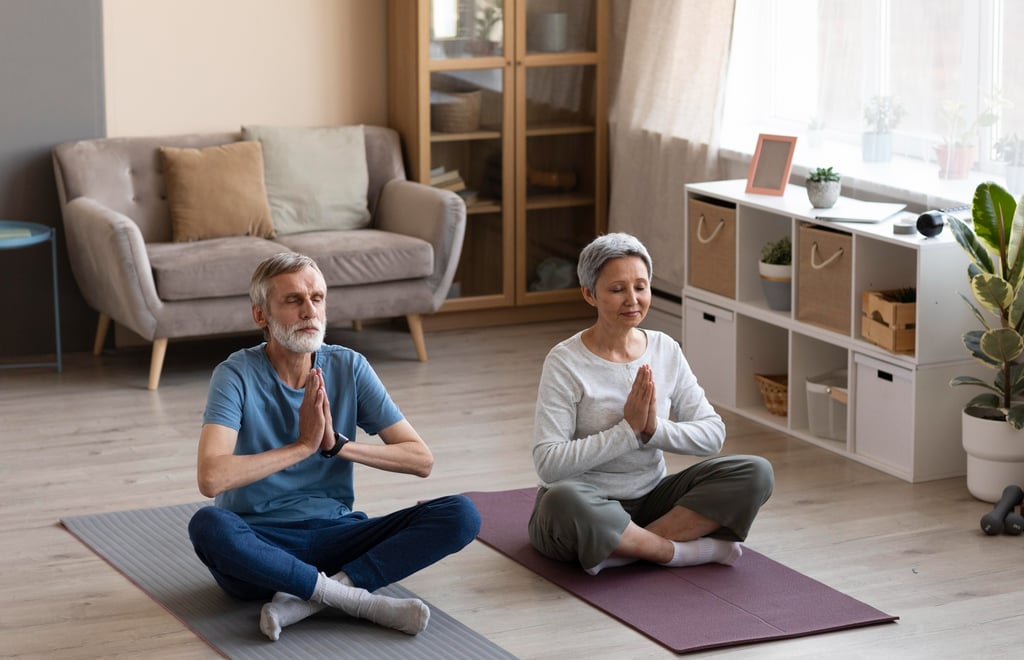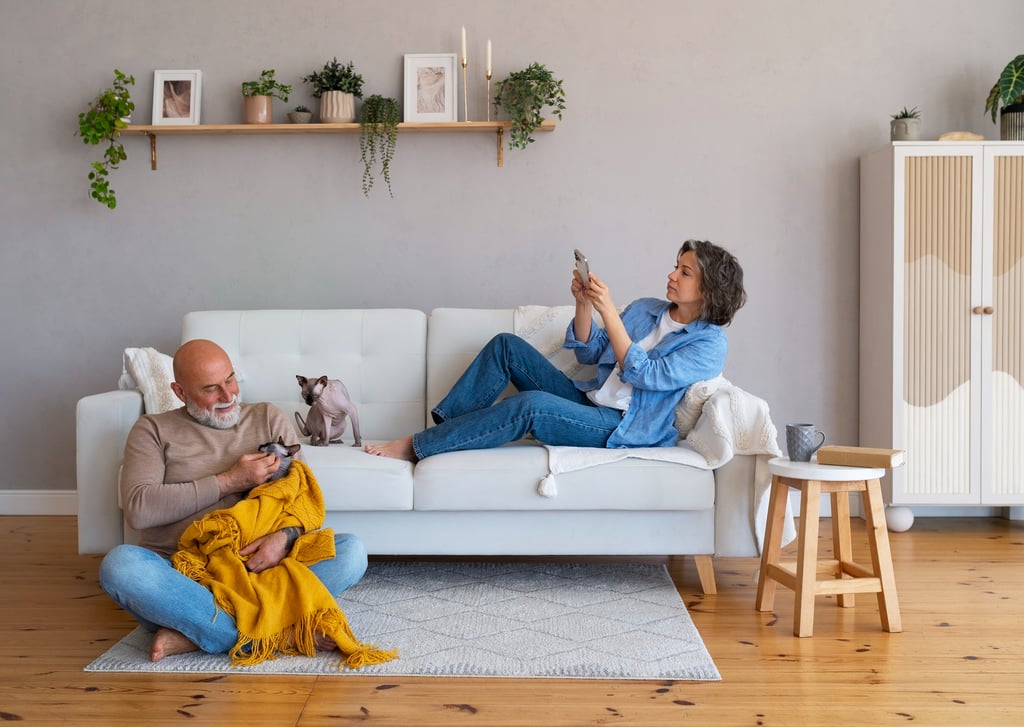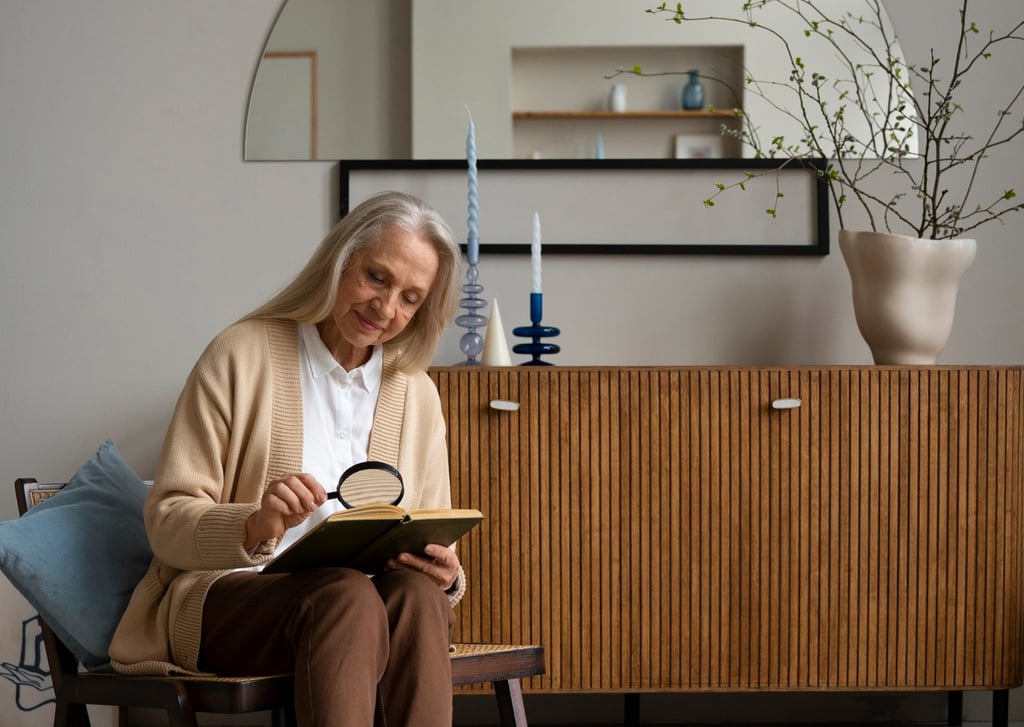Thoughtful Interiors for Senior Living: Designing for Comfort & Joy
DESIGN
As we age, our homes should evolve with us. They transform from mere structures into havens of comfort, safety, and joy. For senior individuals, thoughtful interior design isn't just about aesthetics; it's about enhancing independence, promoting well-being, and ensuring that daily life remains as effortless and enjoyable as possible.
In India, where multi-generational living is common and respect for elders is deeply ingrained, creating a home that truly supports our seniors is a priority. It's about designing with empathy and foresight.
Here are key considerations and practical tips for creating a beautiful and functional living space for senior people:
Prioritize Safety: The Foundation of Good Design
Safety is paramount. Falls are a significant concern, so minimizing hazards is the first step.
Declutter Ruthlessly:
Clear pathways of all obstacles – no more tripping over rugs or tangled wires.
Optimal Lighting:
Ensure every area is well-lit, especially stairways, hallways, and bathrooms. Consider motion-sensor lights for nighttime trips. Natural light is also crucial for mood and circadian rhythms.
Non-Slip Flooring:
Opt for matte-finish tiles, hardwood with a non-slip coating, or low-pile carpeting. Avoid highly polished or slippery surfaces.
Grab Bars:
Install sturdy grab bars in bathrooms (shower/toilet area) and near stairs. They are discreet and invaluable.
Stair Safety:
If stairs are unavoidable, ensure good handrails on both sides, proper lighting, and contrasting tread colors. Consider stairlifts if mobility is significantly impaired.




Enhance Accessibility & Ease of Use
Making daily tasks simpler contributes immensely to independence.
Wider Doorways & Hallways:
If possible, ensure doorways and hallways are wide enough to accommodate walkers or wheelchairs comfortably (ideally 36 inches or more).
Lever Handles:
Replace doorknobs with lever handles, which are much easier to operate for those with arthritis or weakened grip.
Smart Storage:
Keep frequently used items within easy reach – between waist and shoulder height. Pull-out shelves in cabinets can be a boon.
Comfortable Seating:
Choose chairs and sofas that are firm yet comfortable, with armrests that aid in standing up. Avoid very low seating or overly soft cushions.
Raised Toilet Seats:
Consider a raised toilet seat or an accessible commode for easier use.


Thoughtful Furniture & Layout
The placement and type of furniture can make a huge difference.
Stable Furniture:
Select sturdy, well-balanced furniture that won't tip over easily. Avoid pieces with sharp corners.
Clear Pathways:
Arrange furniture to create clear, unobstructed paths throughout the home. Leave ample space for movement.
Comfortable Bed Height:
A bed that is too high or too low can be difficult to get in and out of. Aim for a height where feet are flat on the floor when seated on the edge.
Easy-to-Use Appliances:
Opt for appliances with clear controls and accessible features. Front-loading washing machines and dishwashers can be easier on the back.
Create a Soothing & Stimulating Environment
Beyond functionality, the home should be a source of peace and positive engagement.
Calming Color Palettes:
Soft, warm, and inviting colors can create a serene atmosphere. Blues, greens, and muted yellows are often calming.
Personal Touches:
Incorporate cherished photos, artwork, and mementos that evoke happy memories. This personalization makes the space truly feel like home.
Natural Elements:
Indoor plants (easy to care for!), natural wood, and good ventilation contribute to a healthier and more pleasant environment.
Sensory Engagement:
Consider opportunities for gentle sensory stimulation – a small indoor herb garden, a comfortable reading nook, or a designated space for hobbies.
Leverage Technology (Wisely!)
Modern technology can be a powerful ally in senior living, but it should be intuitive and helpful, not overwhelming.
Voice-Activated Devices:
Smart speakers can help with reminders, calls, and even controlling lights.
Video Doorbells:
For security and convenience.
Fall Detection Systems:
Wearable devices or smart home sensors can offer peace of mind.
Automated Lighting:
Timers or motion sensors can ensure lights are on when needed.
Designing for senior people is an act of love and respect. It's about empowering them to live fulfilling lives in spaces that are not only beautiful but also safe, accessible, and deeply comfortable. By taking these considerations into account, we can transform houses into true homes that nurture and support our elders for years to come.
FOQ
Q1: How do I make a bathroom safer for an elderly person without a major renovation?
A1: You can make significant improvements with smaller changes. Install grab bars near the toilet and in the shower/bathtub. Use a non-slip bath mat or apply anti-slip strips in the shower. A raised toilet seat can be very helpful. Ensure good lighting and remove any clutter from the floor.
Q2: What's the ideal lighting for a senior's home?
A2: A combination of ambient (general), task (for specific activities like reading), and accent lighting is ideal. Aim for bright, even illumination without glare. Use higher wattage bulbs where needed, especially in task areas. Motion-sensor lights in hallways and bathrooms are excellent for nighttime safety. Natural light is also very important, so keep windows unobstructed.
Q3: What kind of flooring is best for senior living?
A3: Non-slip, low-maintenance flooring is best. Options include low-pile carpeting (which reduces fall impact), matte-finish ceramic tiles, or natural wood with a non-slip finish. Avoid highly polished or slippery surfaces like marble or glossy tiles. Remove throw rugs that can be tripping hazards.
Q4: How can I make furniture more accessible for an elderly person?
A4: Choose furniture that is firm but comfortable, with armrests that assist in standing. Avoid very low or deep seating. Ensure pathways around furniture are wide and clear. Consider risers for chairs or beds if they are too low, but ensure they are stable.
Q5: Should I incorporate technology into a senior's home?
A5: Yes, wisely chosen technology can greatly enhance safety and independence. Simple voice-activated smart speakers can help with reminders, calls, and controlling lights. Video doorbells offer security. However, avoid overly complex systems that might cause frustration. Focus on user-friendly devices that address specific needs.



